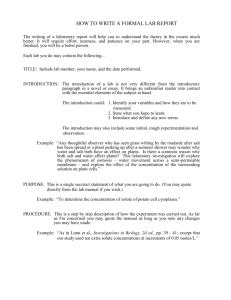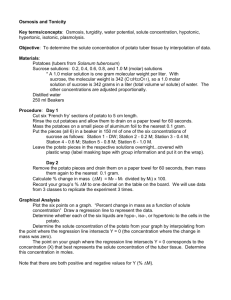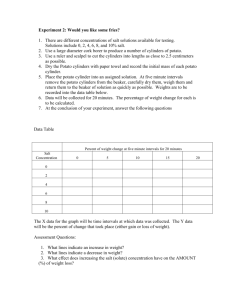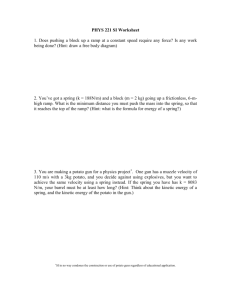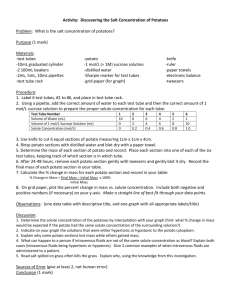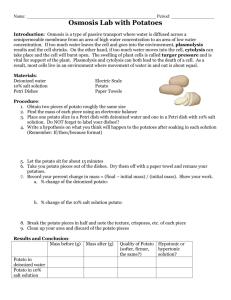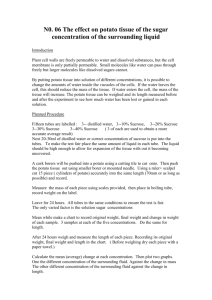Solute Concentration of Potatoes /15
advertisement
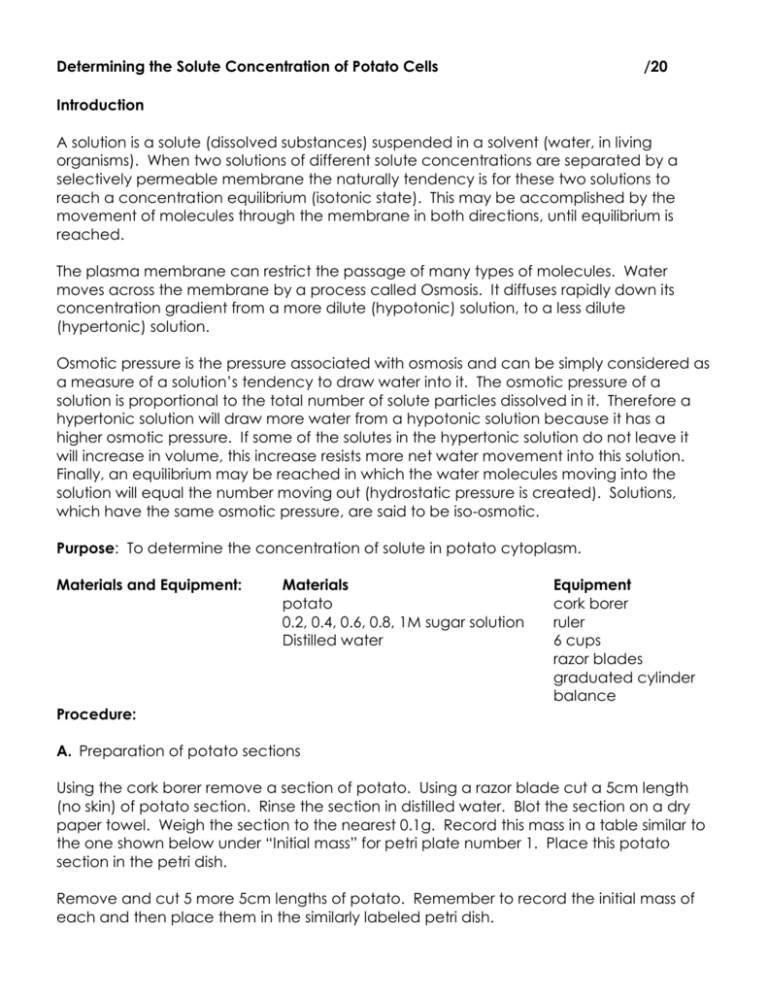
Determining the Solute Concentration of Potato Cells /20 Introduction A solution is a solute (dissolved substances) suspended in a solvent (water, in living organisms). When two solutions of different solute concentrations are separated by a selectively permeable membrane the naturally tendency is for these two solutions to reach a concentration equilibrium (isotonic state). This may be accomplished by the movement of molecules through the membrane in both directions, until equilibrium is reached. The plasma membrane can restrict the passage of many types of molecules. Water moves across the membrane by a process called Osmosis. It diffuses rapidly down its concentration gradient from a more dilute (hypotonic) solution, to a less dilute (hypertonic) solution. Osmotic pressure is the pressure associated with osmosis and can be simply considered as a measure of a solution’s tendency to draw water into it. The osmotic pressure of a solution is proportional to the total number of solute particles dissolved in it. Therefore a hypertonic solution will draw more water from a hypotonic solution because it has a higher osmotic pressure. If some of the solutes in the hypertonic solution do not leave it will increase in volume, this increase resists more net water movement into this solution. Finally, an equilibrium may be reached in which the water molecules moving into the solution will equal the number moving out (hydrostatic pressure is created). Solutions, which have the same osmotic pressure, are said to be iso-osmotic. Purpose: To determine the concentration of solute in potato cytoplasm. Materials and Equipment: Materials potato 0.2, 0.4, 0.6, 0.8, 1M sugar solution Distilled water Equipment cork borer ruler 6 cups razor blades graduated cylinder balance Procedure: A. Preparation of potato sections Using the cork borer remove a section of potato. Using a razor blade cut a 5cm length (no skin) of potato section. Rinse the section in distilled water. Blot the section on a dry paper towel. Weigh the section to the nearest 0.1g. Record this mass in a table similar to the one shown below under “Initial mass” for petri plate number 1. Place this potato section in the petri dish. Remove and cut 5 more 5cm lengths of potato. Remember to record the initial mass of each and then place them in the similarly labeled petri dish. B. Once each of the potato sections have been made and placed in a petri dish. Measure 10mL of each of the sugar solutions and pour the solution into the dish. One dish will have 10mL of distilled water. Leave the potatoes for approximately 24 hours. Observations: Record your result in a chart similar to the one shown Petri Dish # 1 2 3 4 5 6 Conc. Of Sucrose Sol’n (Mol/L) 1 0.8 0.6 0.4 0.2 0.0 Initial Mass (g) Final Mass (g) Change in Mass (g) Percentage change in mass (%) After 24 hours, remove each potato section, blot dry and weigh to the nearest 0.1g as before. Record each mass as “final mass.” Calculate if a gain or loss of potato mass occurred for each potato section by subtracting the “initial mass” from the “final mass” (note the number can be positive or negative!) Record the final result by using a + or – sign before the numerical value to indicate a loss or gain in the mass of each section. Calculate the percentage change in mass for each section by using the following formula: Change in mass (g) X 100 Initial mass (g) Graph the percentage change in mass of the potato sections (y- axis) versus the concentration of the sugar solution (x-axis). Connect the points with a smooth curve. Questions: 1. In terms of tonicity, explain why some potato sections increased in mass, why some decreased in mass and why some changed very little in mass. 2. At approximately what concentration are potato cytoplasm and the sucrose solution isotonic? Explain. What can you conclude about the solute concentration of potato cytoplasm? Why? 3. In order to keep vegetable “crisp”, grocery stores use cool water or ice. Which would keep vegetable crisper; tap water or distilled water? Explain. 4. When chemicals are added to the bloodstream, they are added in solution. Why is it important that this solution be of the same concentration as that of the blood plasma? 5. In the winter, grass often dies near roads that have been salted to remove ice. What causes this to happen?
